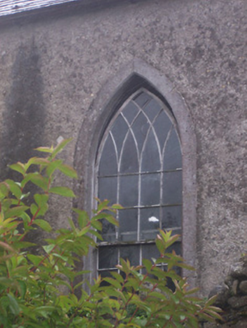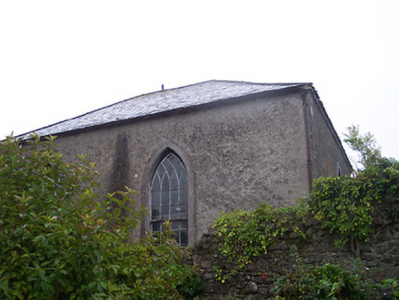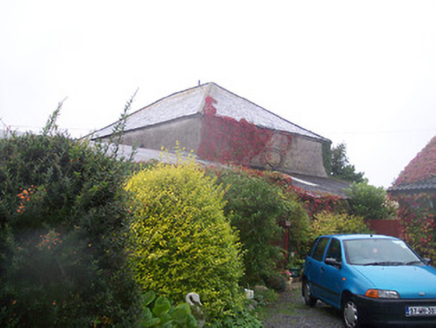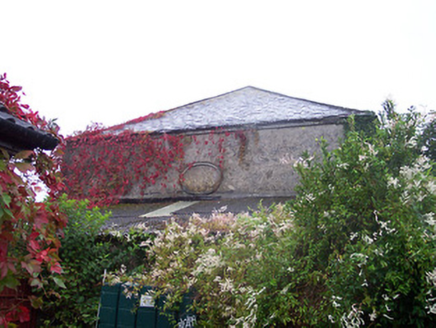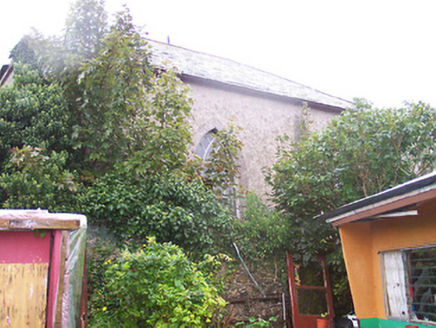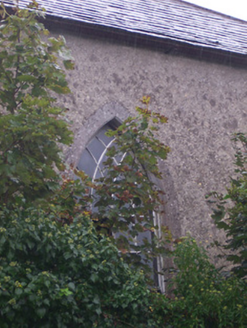Survey Data
Reg No
15322041
Rating
Regional
Categories of Special Interest
Architectural, Historical, Social
Previous Name
Tyrrellspass Methodist Chapel
Original Use
Church/chapel
In Use As
Unknown
Date
1810 - 1820
Coordinates
241376, 237713
Date Recorded
16/09/2004
Date Updated
--/--/--
Description
Semi-detached two-bay single-storey former Methodist meeting house, built or rebuilt c.1814. Now out of use. Hipped natural slate roof with projecting eaves course and cast-iron rainwater goods. Roughcast rendered walls. Pointed-arched window openings with plain dressed limestone surrounds and sliding sash windows with intersecting tracery. Cut stone oval plaque to east elevation reads 'John Wesley preached here'. Set back from road behind single-storey garage (15322040) and currently inaccessible.
Appraisal
Now surrounded by buildings on three sides this former Methodist meeting house is almost invisible from the street. However, this building originally had a forecourt and opened onto the street to the south (Ordnance Survey map 1837). Despite its rather crowded location it is nevertheless of a charming structure of subdued detailing, which is characteristic of the chaste buildings the Methodist community preferred as places of worship. John Wesley (1701-91), the founder of the Methodist Community, preached at Tyrrellspass on numerous occasions between 1748-89. An elegant oval plaque to the façade records that John Wesley preached at this meeting house. However, it is difficult to ascertain if this is a building Wesley preached at or if this is a later structure. Jane, Countess of Belvedere, reputedly (re)built the present edifice in 1814. Why it was built away from the Crescent, which The Countess of Belvedere laid out between c. 1814-1830, is hard to explain. It could be that Jane, Countess of Belvedere, did not want to give the Methodist community a central focus along side the Church of Ireland church and stipulated it that it was built back from the streetline in a relatively isolated location, as was often the case with Roman Catholic chapels constructed at the time.
